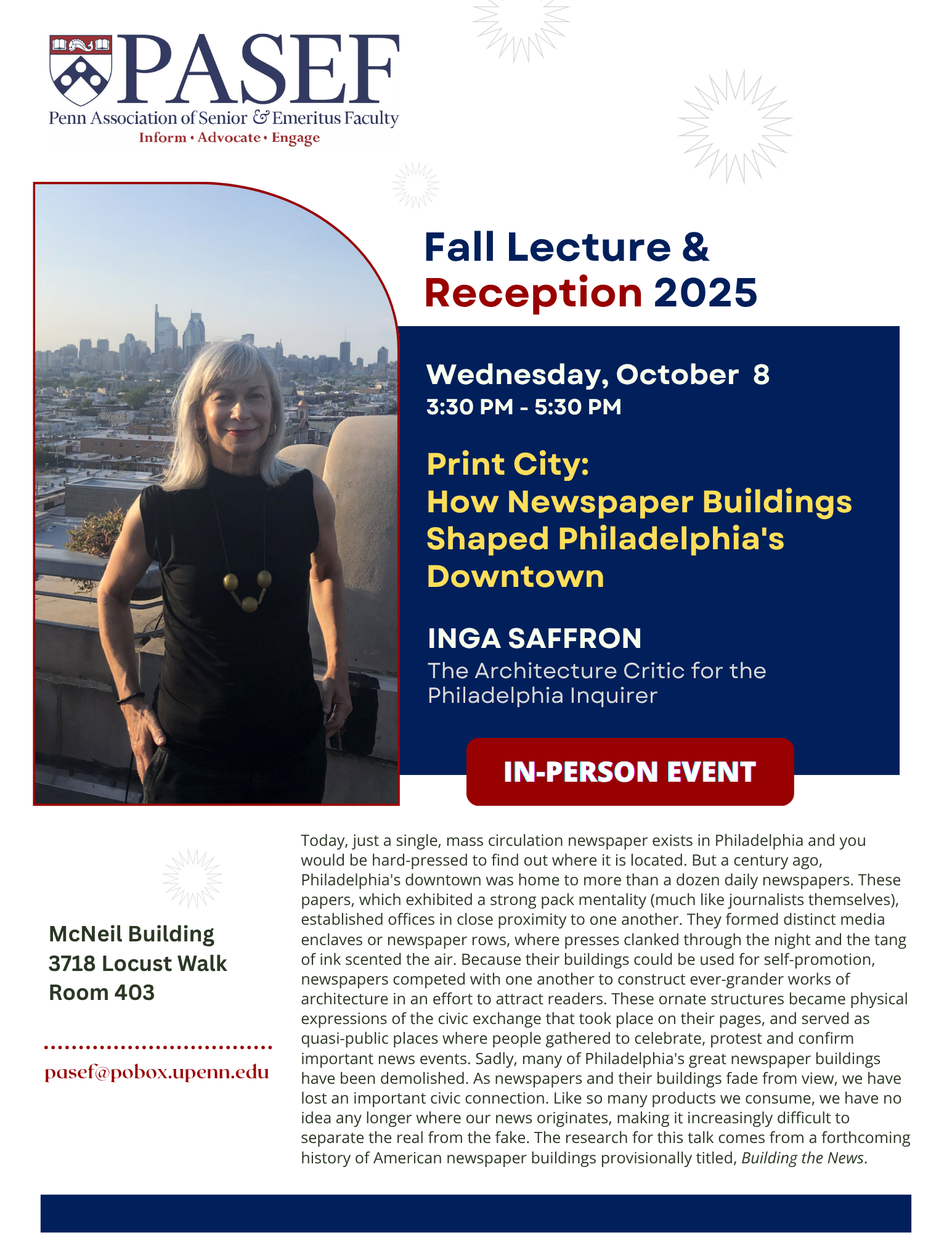
PASEF Events
Fall Lecture & Reception: Inga Saffron, Print City
Join us in person for our Fall Lecture & Reception in the McNeil Building.
Print City: How Newspaper Buildings Shaped Philadelphia’s Downtown
Inga Saffron is the architecture critic for the Philadelphia Inquirer. For more than 25 years, she has been a forceful advocate for meaningful design, accessible public spaces and transit, affordable housing, historic preservation and policies that make our cities more liveable and climate resilient. Her work has been recognized with numerous awards, including the 2014 Pulitzer Prize for Criticism, the 2018 Vincent Scully Prize from the National Building Museum, a 2012 Loeb Fellowship from Harvard’s Graduate School of Design and a 2023 Guggenheim Fellowship.
Inga began her career as a municipal reporter in New Jersey, and went on to become a foreign correspondent in Eastern Europe and the former Soviet Union. In the 1990s, she covered wars in Yugoslavia and Russia, where she witnessed the destruction of Sarajevo and Grozny. She has published two books: Becoming Philadelphia: How an old American city made itself new again, a selection of her Inquirer columns, and Caviar: The Strange History and Uncertain Future of the World’s Most Coveted Delicacy, a cultural history of the sturgeon. She is currently working on a social and architectural history of the American newspaper building, tentatively titled Holding the Presses: How Newspaper Buildings Shaped the American City.
Today, just a single, mass circulation newspaper exists in Philadelphia and you would be hard-pressed to find out where it is located. But a century ago, Philadelphia’s downtown was home to more than a dozen daily newspapers. These papers, which exhibited a strong pack mentality (much like journalists themselves), established offices in close proximity to one another. They formed distinct media enclaves or newspaper rows, where presses clanked through the night and the tang of ink scented the air. Because their buildings could be used for self-promotion, newspapers competed with one another to construct ever-grander works of architecture in an effort to attract readers. These ornate structures became physical expressions of the civic exchange that took place on their pages, and served as quasi-public places where people gathered to celebrate, protest and confirm important news events. Sadly, many of Philadelphia’s great newspaper buildings have been demolished. As newspapers and their buildings fade from view, we have lost an important civic connection. Like so many products we consume, we have no idea any longer where our news originates, making it increasingly difficult to separate the real from the fake. The research for this talk comes from a forthcoming history of American newspaper buildings provisionally titled, Building the News.
